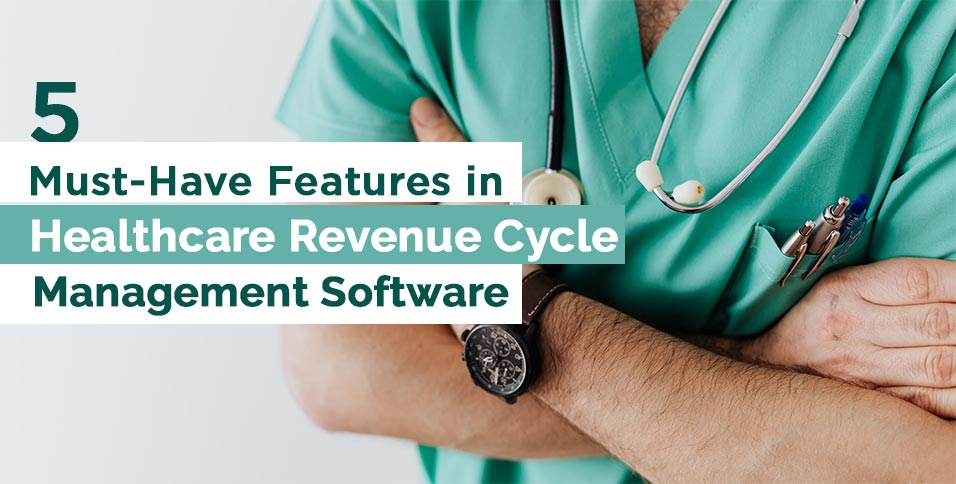In the ever-changing landscape of healthcare revenue cycle management, technology plays a crucial role in ensuring efficient and effective operations. One such technology is revenue cycle management software, which can help healthcare organizations manage their finances and streamline their revenue cycles.
But with so many options available, choosing the right software for your organization can be overwhelming.
In this article, we will outline the top five must-have tools in healthcare revenue cycle management software, providing insights into the features that can help optimize revenue cycles and drive financial success.
1. Efficient Claims Management
According to RevCycle Intelligence, effective management of claim denials and prompt resolution of claim reimbursement issues is crucial for healthcare organizations.
Technical or clinical problems, such as improper ICD-10 coding or missing signatures on patient charts, can lead to claim denials. Claim denial rates have been on the rise, with hospitals experiencing a 23% increase in claim denials from 2016 to 2020.
Efficient claims management is a critical feature of healthcare revenue cycle management software. With this tool, healthcare organizations can track and manage claims from start to finish, ensuring they are accurately processed and reimbursed on time.
This includes tools for electronic claim submissions, automated claim tracking, and claim scrubbing to reduce errors and minimize denials. An efficient claims management tool can help organizations identify trends and patterns in claim denials, allowing for targeted process improvements and increased revenue.
According to Millin, it is crucial for healthcare facilities, particularly non-profit organizations, to ensure proper accounting of every dollar. Incorrectly submitted or underpaid claims cannot be overlooked, as it can lead to lost revenue. Therefore, your RCM system must adhere to high standards, leaving no room for errors in the claims management process and revenue cycle workflow.
By streamlining the claims management process, healthcare organizations can reduce administrative costs and improve cash flow, ultimately driving better financial outcomes for the organization.
2. Automated Payment Posting
Automated payment posting is another critical feature of healthcare revenue cycle management software. This tool allows healthcare organizations to automatically post payments from insurance companies and patients, eliminating the need for manual data entry and reducing the risk of errors.
With automated payment posting, organizations can quickly and accurately reconcile payments, track adjustments, and denials, and identify trends in payment behavior. This feature can also be used to automatically generate patient statements and track outstanding balances, improving the organization’s cash flow and reducing the time and effort required for billing and collections.
Automated payment posting is a valuable tool that can help healthcare organizations streamline their revenue cycle management processes and optimize their financial performance.
3. Real-Time Eligibility Verification
Business News Daily notes that many people have experienced the frustration of receiving a medical bill much higher than expected after visiting a doctor. It can be confusing to understand why insurance did not cover the full cost can be confusing.
As a healthcare practitioner, you can prevent this type of negative patient experience. By verifying a patient’s insurance before their appointment, you can inform them about what their plan covers and what it does not.
Real-time eligibility verification is a critical feature of healthcare revenue cycle management software that helps organizations verify patient insurance coverage and eligibility in real time.
With this tool, healthcare organizations can quickly and easily check patient eligibility, co-pay, deductible, and coinsurance amounts, reducing the risk of claim denials and improving the efficiency of the revenue cycle management process.
Real-time eligibility verification also helps organizations ensure that patients are covered under their insurance plans and avoid unexpected out-of-pocket costs.
4. Detailed Reporting and Analytics
Detailed reporting and analytics are essential components of revenue cycle management software in healthcare. This tool enables healthcare providers to track financial data, monitor key performance indicators (KPIs), and identify areas for improvement in their revenue cycle.
The software should provide a variety of reports that can be customized to meet the specific needs of the organization. These reports should be easy to generate, read and understand. In addition, the analytics tool should offer real-time data analysis to provide a clear and up-to-date picture of the organization’s financial health.
With this feature, healthcare providers can make informed decisions and adjustments to optimize their revenue cycle performance.
5. Robust Compliance Management
According to MedTech Intelligence, compliance with regulations is crucial in healthcare as it ensures the provision of the best possible care to patients. Regulations also establish standards for optimal practices among various healthcare organizations. However, many healthcare organizations need more effective or efficient compliance protocols.
Robust compliance management is essential in healthcare revenue cycle management software. This feature ensures that the organization follows all regulatory requirements and guidelines, such as HIPAA, in its revenue cycle management processes.
It provides alerts and notifications to ensure that all necessary documentation and permissions are obtained before proceeding with any procedure or claim submission. It can also perform regular audits to identify and correct any potential compliance issues, ensuring that the organization remains in good standing with regulatory bodies.
A reliable compliance management tool reduces the risk of penalties, fines, and reputational damage, making it an indispensable feature for any healthcare revenue cycle management software.
Conclusion
Healthcare revenue cycle management software is a vital tool for healthcare providers looking to improve their financial performance. The top five must-have tools in revenue cycle management software are efficient claims management, automated payment posting, real-time eligibility verification, detailed reporting and analytics, and robust compliance management.
These tools allow healthcare providers to streamline their revenue cycle processes, reduce errors, and improve cash flow. When selecting a revenue cycle management software, it is essential to prioritize these features and ensure that the software can integrate with existing systems.
Investing in robust revenue cycle management software with these key features can help healthcare providers maximize revenue, improve efficiency, and ultimately provide better patient care.
Also Read: A. Hadi Chaudhry: A Charismatic Leader Shaping Healthcare With Innovative Solutions















